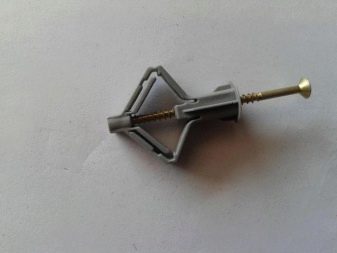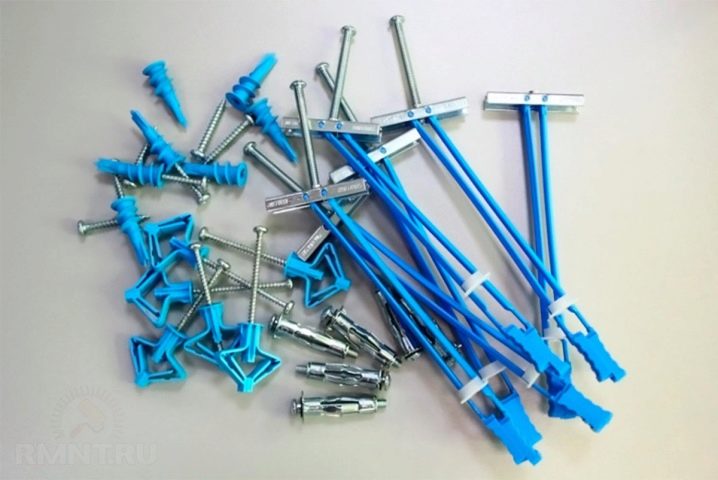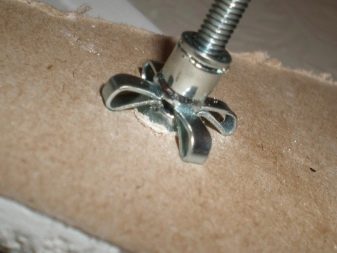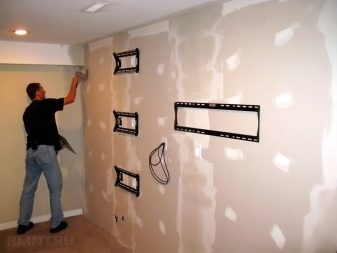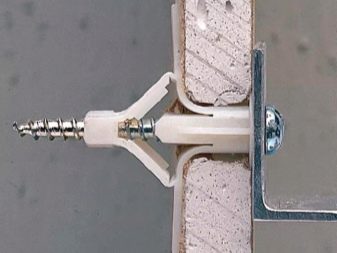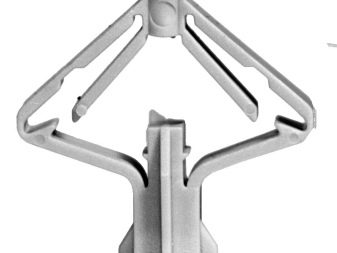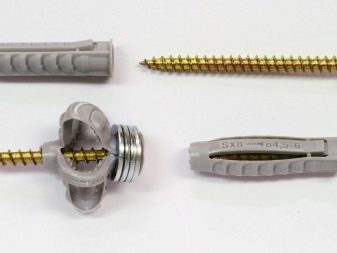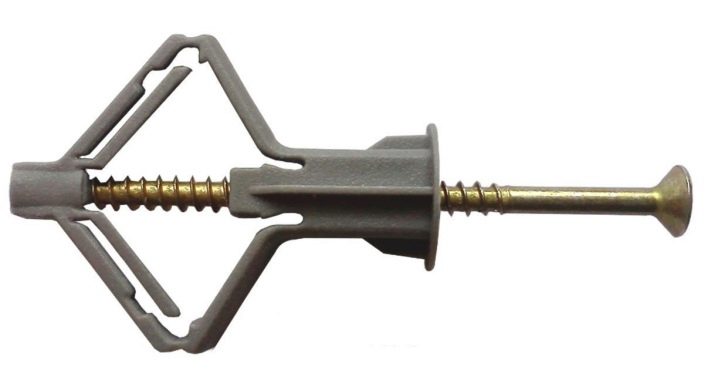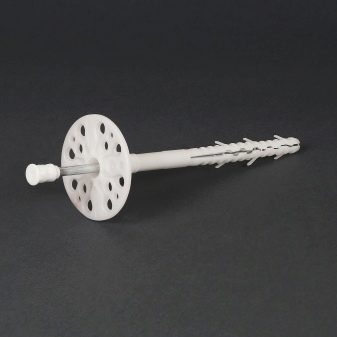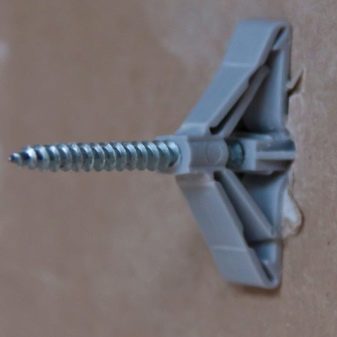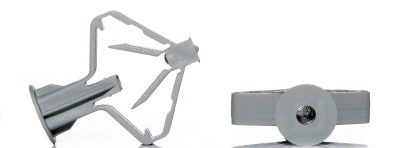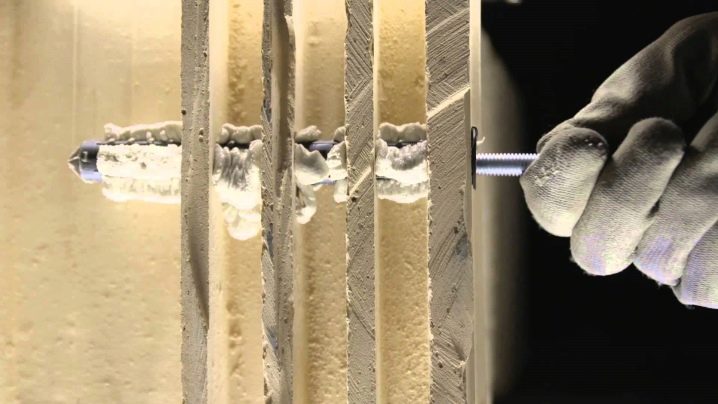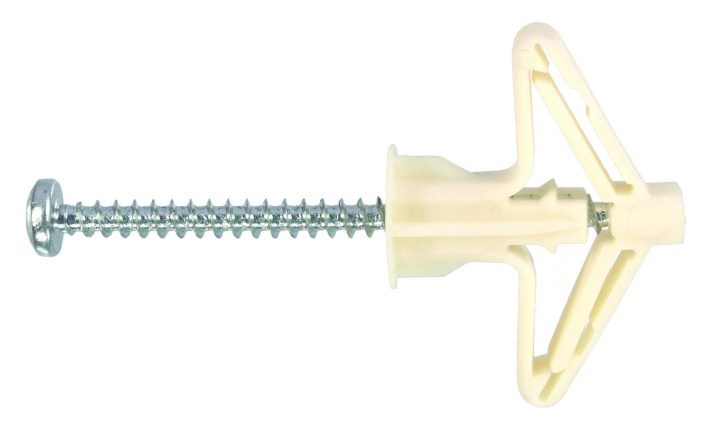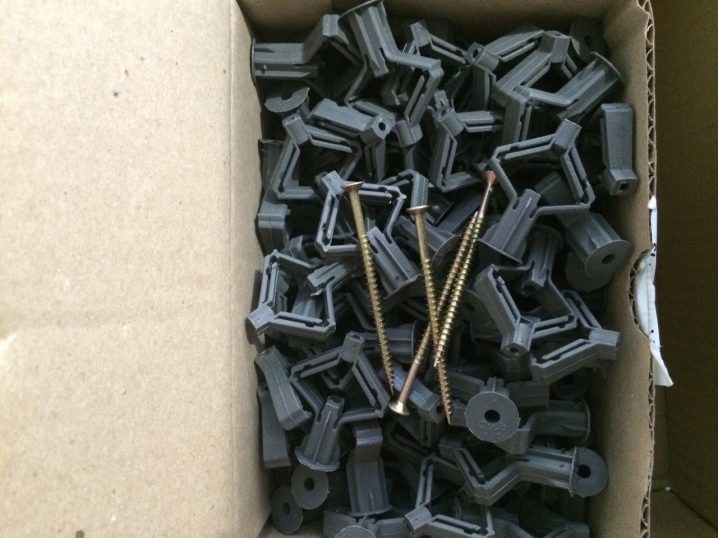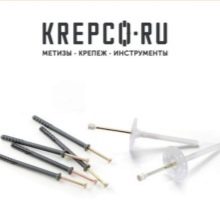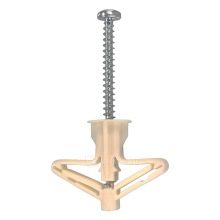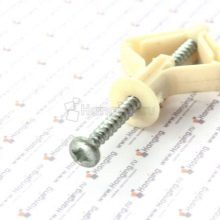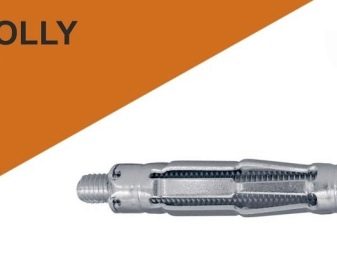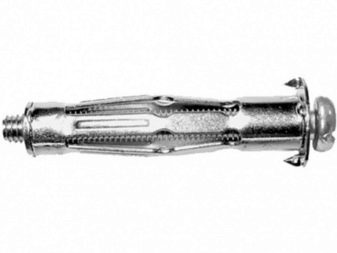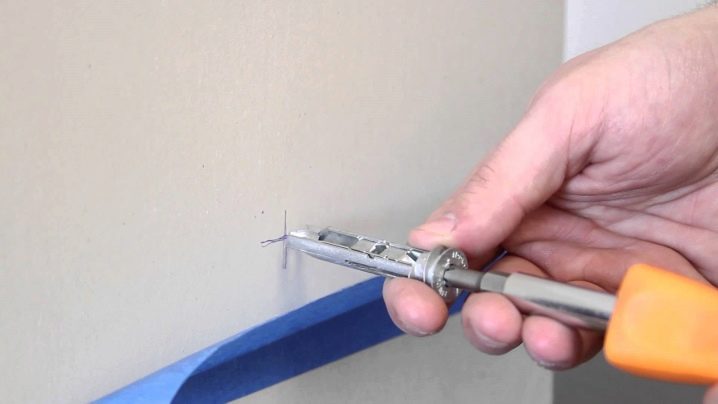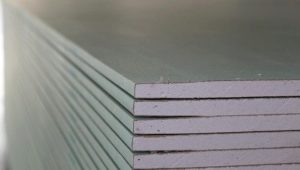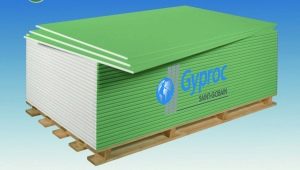Dowel "butterfly" for drywall: the pros and cons
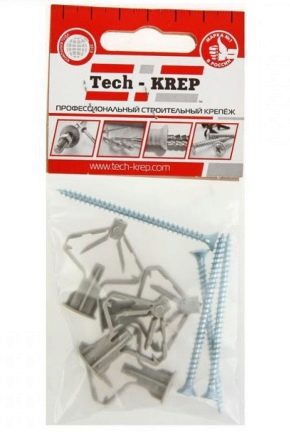
For many years, drywall has taken one of the leading places among the materials for wall cladding. And to finish was high quality, it is important to correctly select fasteners for such material.
A huge selection of self-tapping screws is presented on the modern market, but the butterfly dowel is particularly popular among them.
Special features
The dowel "butterfly" is a fairly simple device that used for mounting eaves, baseboards, brackets, wall cabinets or fixtures on a sheet of drywall.
It is a screw, supplemented by a plastic element that looks like butterfly wings.It is because of this fastener got its name. When twisting the dowel, the "wings" are straightened and tightly pressed against the back surface of the drywall sheet. Due to this, the load on the sheet is distributed more evenly. This significantly reduces the risk of material damage during installation.
Specifications
The device of the fixing element assumes the presence of a ribbed surface, which prevents scrolling and folding of the dowel. And the internal legs, located on the fastener head, give the finished design additional stability and durability.
By the way "Butterfly" is used for work not only with drywall, but also with sheets of chipboard and gypsum fiber board. However, most of all this element is suitable for working with drywall. Sheet thickness can be single - 10-12 millimeters or double - 20-24 millimeters.
Main types of fasteners
Consider two types of dowel "butterfly" depending on the material from which they are made:
- Metallic. This type of fastener is the most durable, durable and practical. Dowel is able to easily withstand huge loads (hundreds of kilograms).You should not be afraid that the part will become rusty over time. After all, manufacturers treat the product with a special compound against corrosion. However, the metallic version does have one minus. This is his rather high cost. But if you compare the price with all the advantages of such a purchase, then it no longer looks so big.
- Plastic or nylon. These are the most modern options of dowels today. They are also durable, but they weigh little. Fasteners made of plastic compounds are easy to find on sale, and its price is available for everyone. However, resistance to high loads and mechanical damage is undoubtedly lower than that of metal counterparts.
There are several more types of fasteners depending on their size and purpose.
Dowel "butterfly" 8x28
This is the smallest type of fasteners, which is of good quality, affordability and low cost. Suitable for lightweight construction and light loads..
When using these elements should be remembered that the screws do not come with them in the kit, they will have to be bought separately.
Purchase a size of 3.5 mm x 35 mm. The screw can be galvanized or not. The choice depends on whether the element will be in a prominent position.
For work use a drill with a diameter of 8 millimeters.
Then squeeze the butterfly with your fingers and place it in the prepared hole until it stops. Next, fasten the screw of the desired length. As a result, you get a reliable design that can withstand a load of not more than 16 kilograms.
Dowel "butterfly" 10x50
This version of the fastener differs markedly from the previous one. Its spacer parts are much larger; there are also a couple of special “tongues” inside them, which provide additional reliability when fastening the anchor. This is the most common type of dowel "butterflies" of all offered on the market today.
It is made of nylon, polypropylene and even polyethylene. It is important that the fasteners are not too rigid, but remain quite elastic.. So he definitely will not break in the process of installation.
The dowel of this type can easily withstand a load of 24 kilograms, therefore it is excellent for fixing wall-mounted cabinets and shelves.
The method of mounting this element is similar to the previous version.However, it should buy larger screws. By the way, if you need a dowel of smaller dimensions, try to order a 6x40 part.
Universal dowel
Another such fastener is called - the dowel-nail “butterfly” for drywall. Similar items can be used not only for sheet, but also for corpulent materials. Since this type of anchor is universal, it deserves great popularity. Options of nylon are especially in demand due to the elasticity of the material. The length and diameter of the universal plug can be different. So, you can easily find a suitable option for yourself.
However, do not use this fastener for heavy overall structures.. If you need a reliable fixation, we advise you to buy more durable elements, such as metal. But it is also extremely important to choose the correct length of the screw so that it does not damage the material and ensures maximum structural strength.
What is the maximum load?
According to the promises of manufacturers, the dowel-nail "butterfly" withstands a maximum load of 28 kg. However, the recommended load for fasteners is approximately twenty kilograms.
Benefits
The popularity of this fastener in modern decorating is due to its several advantages:
- Versatility. Today, in any store you will find a dowel as an independent product, as well as an addition to the self-tapping screw. This means that if necessary, you can easily replace a threaded part with suspensions or a ring.
- Fixing reliability. This quality is achieved by the design feature of the fastener, which implies the presence of a ribbed surface. There is no doubt that the dowel will be securely fastened in the gypsum board.
- Providing extra stiffness. If you screw the butterfly anchor, its legs will disperse to the sides. Due to this, additional rigidity of the whole structure is achieved, which is especially important when working with two-layer gypsum plasterboards.
- Ease of installation work. You can easily cope with this type of fasteners, even if you do not have much experience in construction and finishing works.
- Long period of use. Plastic dowel size of 12 millimeters can be used several times. It is very convenient and saves time and money.
- Availability. You will not have to search for the necessary anchor for a long time.Butterflies today are easy to find at any hardware store.
disadvantages
Usually, among the disadvantages of this type of fasteners, in comparison with others, they emit a small load that the butterfly can withstand.
Most Popular Manufacturers
Among the modern manufacturers of fasteners, there are the following:
- TNF;
- “Hard”;
- "Interfix";
- OLA;
- Mashkrepezh;
- "About Hardware";
- Weld-Metiz;
- MOLLI.
Tips and tricks
If you have never encountered installation and finishing works, then it is best to entrust such a thing to professionals. They can do the job quickly and you don’t have to redo anything. And for those who decide to install fasteners on their own, it is important to know a few basic points that will significantly affect the efficiency and the final result of your work.
- Hammer in the dowel "butterfly". It is not enough to simply screw in the anchor, since it can dangle in the hole, remaining fixed insufficiently tightly.
- Observe the optimum dimensions. If you make too big a hole in the drywall sheet, the fasteners will stay bad and will not bring the necessary benefits.
- Watch for sheet thickness. "Butterfly" works great on products whose thickness does not exceed five millimeters. For more dimensional structures, another fastener should be selected. At least it should be longer.
- Leave enough space for GCR. Remember that there should be at least thirty-five millimeters of free space behind a sheet of drywall. Only in this way you will succeed in optimally tightening the anchor, pressing the stop.
- Use a regular screwdriver. Do not be lazy and set aside a powerful drill. Since the high revolutions of technology can easily damage the plastic edges of the stop. While a screwdriver does not harm them at all.
The "butterfly" dowel for drywall work is one of the most efficient and modern types of fastener. Experts note that this type of anchor can compete with reliable metal fasteners. And in some cases even surpasses them.
In the next video, see how to use the butterfly plug.

